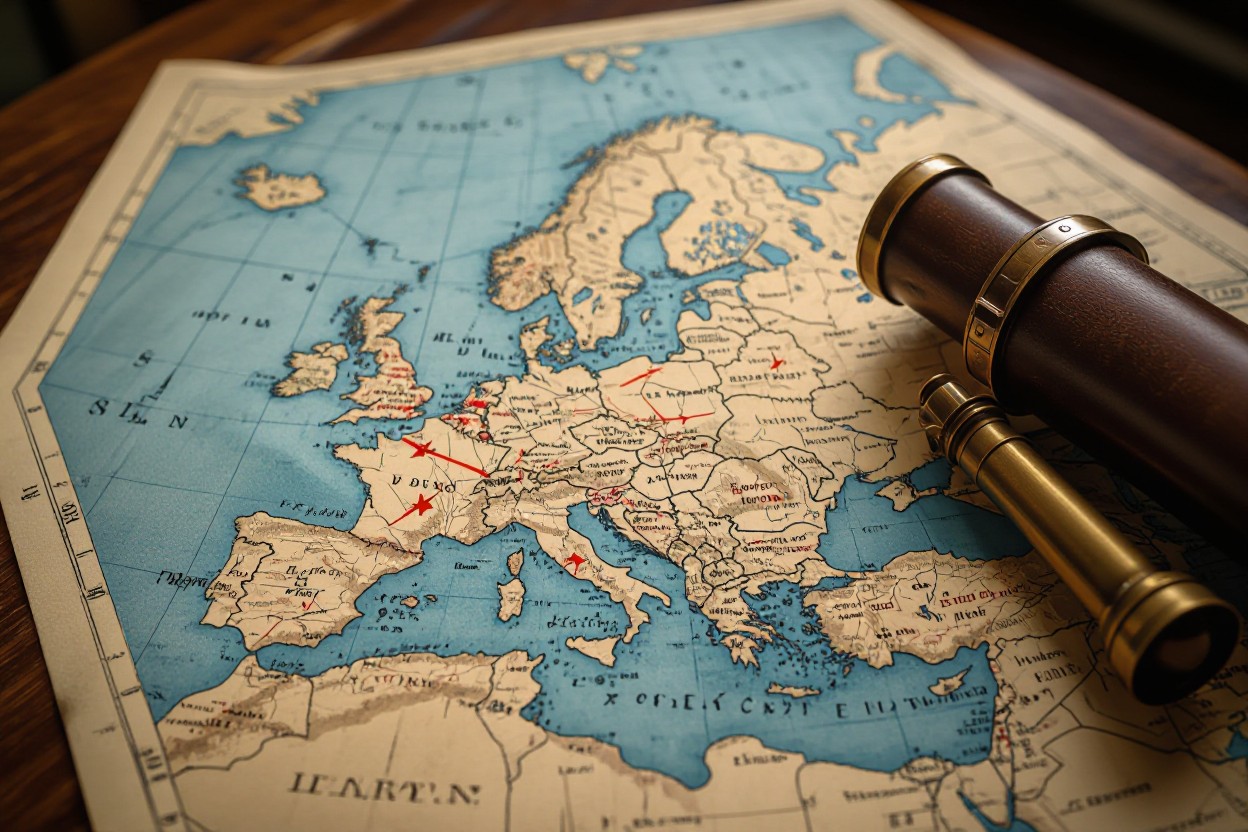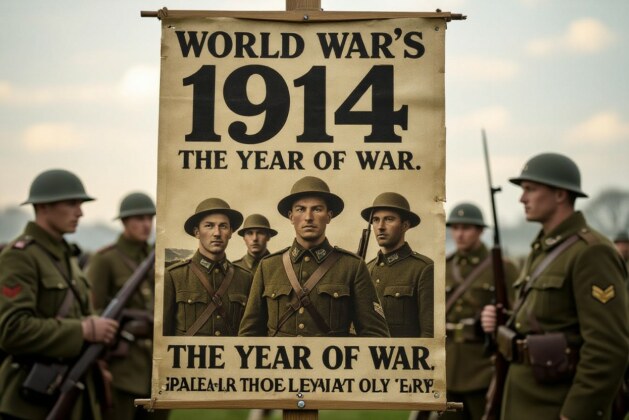Most historians agree that World War I began in 1914, a year marked by a series of events that irrevocably changed the world. In this guide, I will take you through the key moments that triggered the largest conflict of the 20th century, highlighting how alliances, political tensions, and the assassination of Archduke Franz Ferdinand led to war. Understanding this timeline is important to grasp the scale of danger and devastation unleashed, as well as the extraordinary resilience demonstrated by nations and individuals during these turbulent years.

The Spark that Ignited Conflict
The assassination of Archduke Franz Ferdinand set off a chain reaction that quickly engulfed Europe in war. This event did not occur in isolation; it ignited long-standing tensions between rival powers. I find that understanding that single act—and what followed—reveals how a localized incident escalated into a global conflict. The political and military alliances in place by 1914 transformed a regional crisis into what became known as the Great War.
The Assassination of Archduke Franz Ferdinand
On June 28, 1914, Archduke Franz Ferdinand of Austria-Hungary was assassinated in Sarajevo by Gavrilo Princip, a member of the Serbian nationalist group called the Black Hand. This assassination struck directly at the heart of the Austro-Hungarian empire, provoking outrage and demands for retribution. The event became the immediate pretext for Austria-Hungary to confront Serbia, setting off the diplomatic domino effect that would spiral into world war.
The Political Web of Alliances
By 1914, Europe was entangled in a complex system of alliances designed to maintain balance but instead potentiated conflict. I see how the Triple Alliance of Germany, Austria-Hungary, and Italy, countered by the Triple Entente of France, Russia, and Great Britain, created opposing military blocs. These alliances obligated countries to defend one another, turning a bilateral dispute into a multilateral war almost overnight.
Delving deeper, these alliances were not merely defensive pacts but involved intricate commitments including military support, mobilization plans, and strategic coordination. Germany’s “blank check” assurance to Austria-Hungary after the assassination emboldened aggressive actions, while Russia’s mobilization to defend Serbia alarmed Germany and Austria-Hungary. France and Britain were then drawn in by treaties and mutual interests. This interconnectedness meant that a conflict between two states almost inevitably escalated to full-scale war involving all major European powers.
The Countdown to War
After the assassination, tensions escalated rapidly across Europe as alliances activated and diplomatic efforts faltered. You could witness a feverish atmosphere with countries mobilizing troops, railways crisscrossing borders, and governments issuing ultimatums. The pressure cooker of nationalism, militarism, and entangled alliances made the prospect of peace increasingly fragile. Every delay or harsh word deepened mistrust, nudging major powers closer to conflict by early August 1914.
The July Crisis of 1914
The assassination plunged Europe into the July Crisis, a tense period dominated by Austria-Hungary’s ultimatum to Serbia on July 23. Serbia’s response was conciliatory but rejected some demands, and Austria-Hungary declared war on July 28. Russia began partial mobilization, setting off a domino effect, as Germany responded with its own mobilization and declared war on Russia by August 1. This rapid progression framed the crisis as a series of diplomatic failures layered over rising military preparations.
Key Decisions Leading to War
Key leaders made several fateful choices that forced the slide into war. Germany’s “blank check” assurance to Austria-Hungary emboldened aggressive moves, while Russia’s mobilization appeared as a threat demanding counteraction. France aligned with Russia, tightening the alliance system, and Britain prepared for potential conflict due to treaty obligations and naval concerns. These decisions amplified the conflicts, turning regional hostility into a full-scale world war.
Diving deeper, Germany’s “blank check” was particularly significant; by pledging unconditional support to Austria-Hungary, it effectively encouraged the hardline stance against Serbia, reducing chances for diplomatic compromise. Russia’s mobilization—though partial—was perceived as an invasion signal, compelling Germany to invoke the Schlieffen Plan, which aimed for a swift victory over France before turning eastward. French commitment to Russia meant a two-front war was inevitable, while Britain’s ambiguous position shifted toward active engagement once Belgium was invaded, completing the cascade of choices locking Europe into war.
National Mobilization and Early Actions
Following the assassination, European powers swiftly mobilized their armed forces, signaling the dramatic shift from political tension to full-scale war. Massive conscription efforts were launched, with millions drafted across the continent. Economies adjusted rapidly to support wartime production, while alliances set their war plans into motion. This phase saw the rapid transformation of peaceful societies into military factories, emphasizing the war’s immense scale and the depth of national commitment to victory.
Troop Movements and Declarations of War
Germany declared war on Russia on August 1, 1914, followed by its declaration against France two days later. Troop movements accelerated: German forces executed the Schlieffen Plan by advancing through Belgium, aiming to swiftly defeat France. Britain declared war on Germany on August 4, responding to the violation of Belgian neutrality. Russia mobilized along its western frontiers, setting the stage for multiple simultaneous battles. These rapid and coordinated moves underscored the readiness of these nations to engage in large-scale conflict.
Significant Early Battles and Their Impacts
The Battle of the Marne in September 1914 became a defining moment, halting the German advance into France and undermining the Schlieffen Plan’s success. This victory for the Allies forced Germany into a defensive posture. Alongside the Western Front, battles on the Eastern Front, such as Tannenberg, showed how early engagements profoundly shaped strategic directions. The widespread trench warfare that followed redirected tactics and prolonged the conflict into years of attrition.
Diving deeper into these early confrontations, the Battle of the Marne stands out for its scale and strategic consequences. With nearly 2 million troops engaged, the Allies managed to reload and counterattack, pushing German forces back approximately 40 miles and preventing a quick victory in the West. Meanwhile, at the Battle of Tannenberg, the German army decimated Russian Second Army, capturing tens of thousands of prisoners and depleting Russian morale. These setbacks forced a reevaluation of military strategies and foretold the grueling nature of the war ahead, marked by entrenched positions and costly offensives.

Global Perspectives on the Outbreak
The eruption of World War I was not only a European crisis but a global upheaval that reshaped nations far beyond the continent. As alliances drew countries into conflict, the war’s early months witnessed varied global reactions, with powers weighing strategic interests against the unfolding chaos. From colonial territories to distant empires, your eyes would have seen mobilizations and political recalculations as nations prepared for an unprecedented struggle. The global stage became a patchwork of loyalty, opportunism, and apprehension, setting the tone for a conflict whose reverberations would eventually touch every corner of the world.
Reactions from Major Powers
Germany and Austria-Hungary acted decisively to back their allies, while France and Russia rapidly prepared for the anticipated struggle against the Central Powers. The United Kingdom declared war following Germany’s invasion of Belgium, invoking the Treaty of London (1839) that guaranteed Belgian neutrality. Meanwhile, the Ottoman Empire carefully negotiated its entry, aligning with the Central Powers later in 1914. The rapid wartime decisions by these major powers reflected longstanding alliances entwined with national security concerns, leading you to witness the rapid escalation from political tension to full-scale military engagement.
Public Sentiment and Propaganda
Public opinion was swiftly molded by state-sponsored propaganda, painting the enemy as a dire threat to national survival. Newspapers, posters, and speeches stirred patriotic fervor while demonizing adversaries, pushing many citizens to enthusiastically support the war effort. Governments emphasized heroism and sacrifice, tapping into deep-seated nationalistic pride. You would have seen young men eagerly enlisting, communities rallying around war bonds, and daily life being transformed by a shared sense of purpose and urgency fueled by emotionally charged messaging.
Diving deeper into propaganda reveals a complex machinery behind shaping public sentiment. British propaganda, for example, famously employed dramatic imagery and tales of German atrocities, such as the violation of Belgian civilians, to strengthen support for the war. The German and Austro-Hungarian authorities also used their media to maintain morale and justify military actions. Techniques ranged from exaggerated news reports to patriotic music and films, illustrating how governments controlled information flow to keep the populace motivated and aligned with war goals, influencing not only attitudes but social behavior on a massive scale.

Analyzing the Historical Context
Europe’s political landscape before 1914 was tightly bound in a web of alliances and rivalries that made any localized conflict prone to rapid escalation. The intense nationalism in countries like Serbia contrasted sharply with the Austro-Hungarian Empire’s push for central control. Military build-ups, such as Germany’s expanding navy challenging British naval superiority, created an atmosphere of suspicion and dread. I see how these elements intertwined tightly, almost like a ticking time bomb waiting for a spark, which, as we know, was the Archduke’s assassination.
Preceding Tensions in Europe
Between 1870 and 1914, Europe experienced an era rife with diplomatic tension, marked by shifting alliances such as the Triple Entente and the Triple Alliance. Nationalist movements within multi-ethnic empires, especially in the Balkans, fanned flames of unrest, with Serbia aiming for Slavic unification. The escalation of military technologies and conscription laws further entrenched these divisions. One cannot overlook how these years laid a volatile groundwork where mistrust and competition made peace a fragile and fleeting prospect.
Colonial Rivalries and Their Role
Colonial ambitions in Africa and Asia significantly intensified international competition, particularly between Britain, France, and Germany. Germany’s late entry into colonial acquisitions stoked resentment and fear among established powers, leading to incidents like the Moroccan Crises of 1905 and 1911. These conflicts weren’t simply regional disputes but ripple effects that deepened alliances and prepared the European powers for confrontation, feeding national pride as well as mutual suspicion.
Digging deeper, the colonial rivalries not only amplified tensions but also demonstrated how imperial interests dictated military strategies and diplomatic priorities. Germany’s desire for a “place in the sun” challenged the British Empire’s dominance over vast territories. The British and French responses to German maneuvers were not just defense of colonies but a strategic effort to contain Germany’s growing influence. These competing ambitions in distant lands made peaceful resolutions increasingly difficult, ensuring that when war broke out, it carried global implications beyond Europe’s borders.
Final Thoughts
Tracing the outbreak of World War I reveals how a single assassination cascaded into a global conflict involving over 30 nations and millions of soldiers. The intricate alliance systems, military mobilizations, and nationalist fervor created a volatile environment where diplomacy failed repeatedly. As you reflect on these events, it’s clear that the war’s start was not spontaneous but meticulously pieced together through a series of geopolitical decisions and unintended escalations. Understanding this timeline helps you appreciate the complexity behind one of history’s deadliest conflicts and the lasting impact it had on international relations throughout the 20th century.





Leave a comment